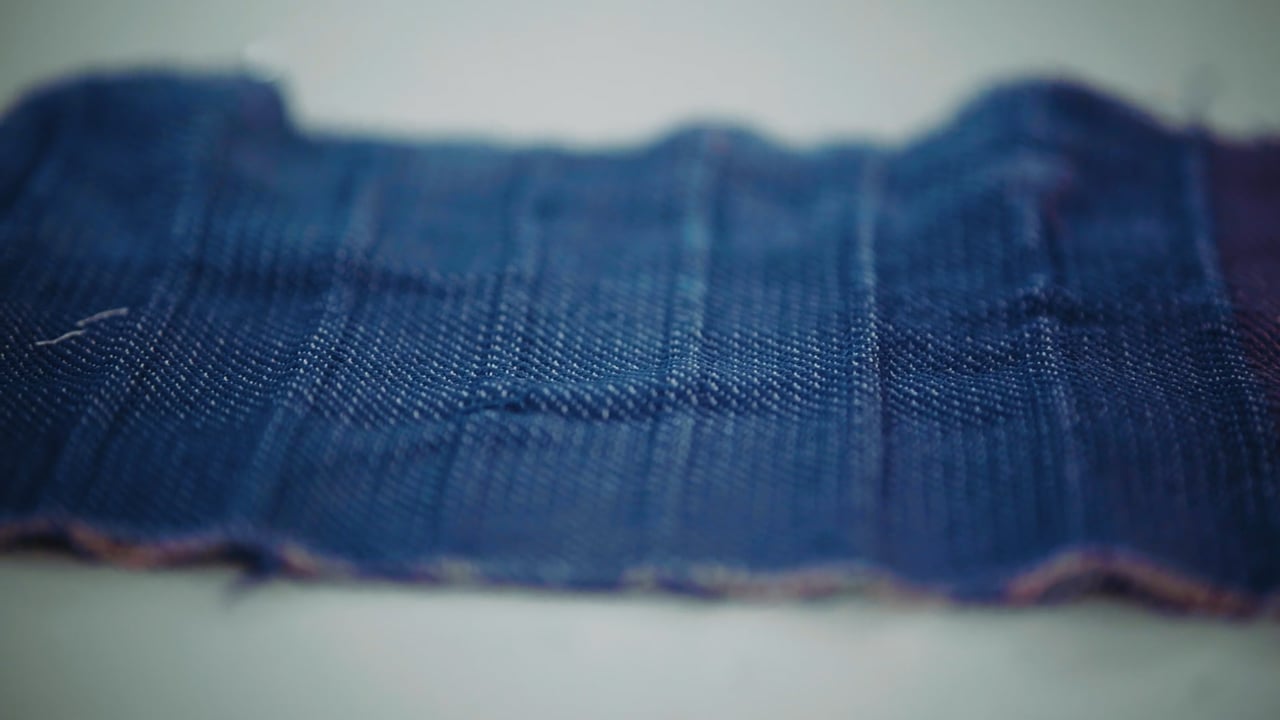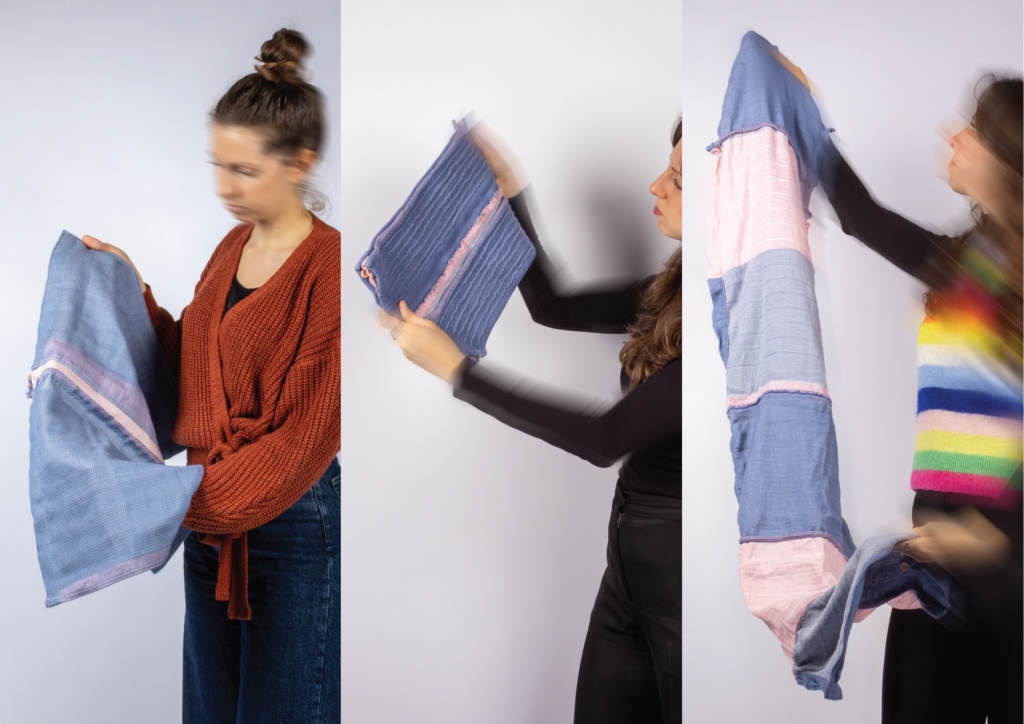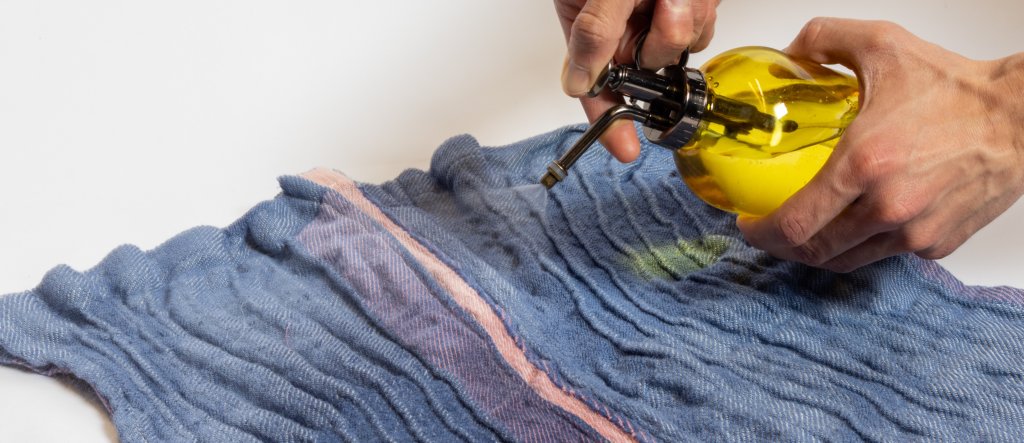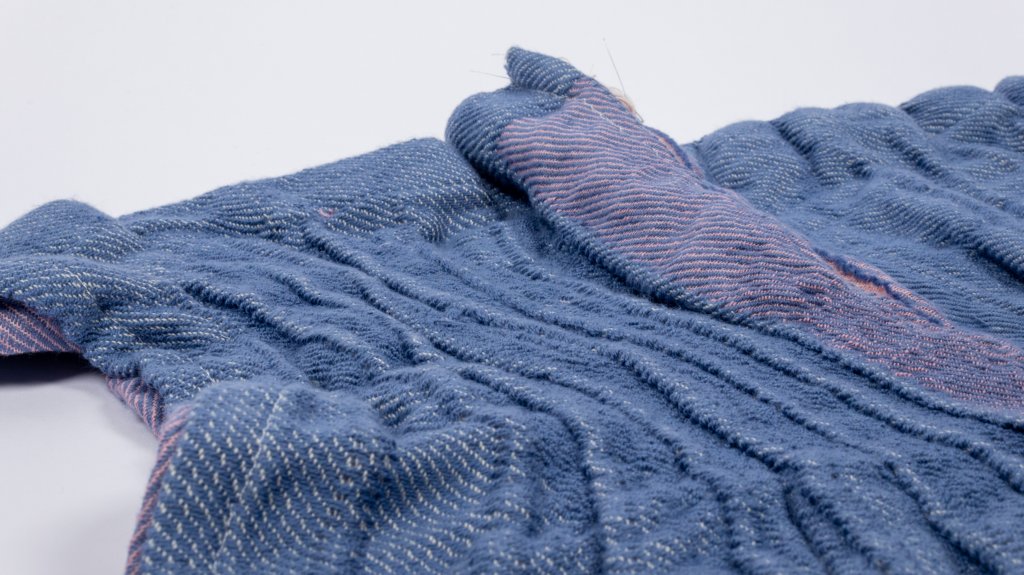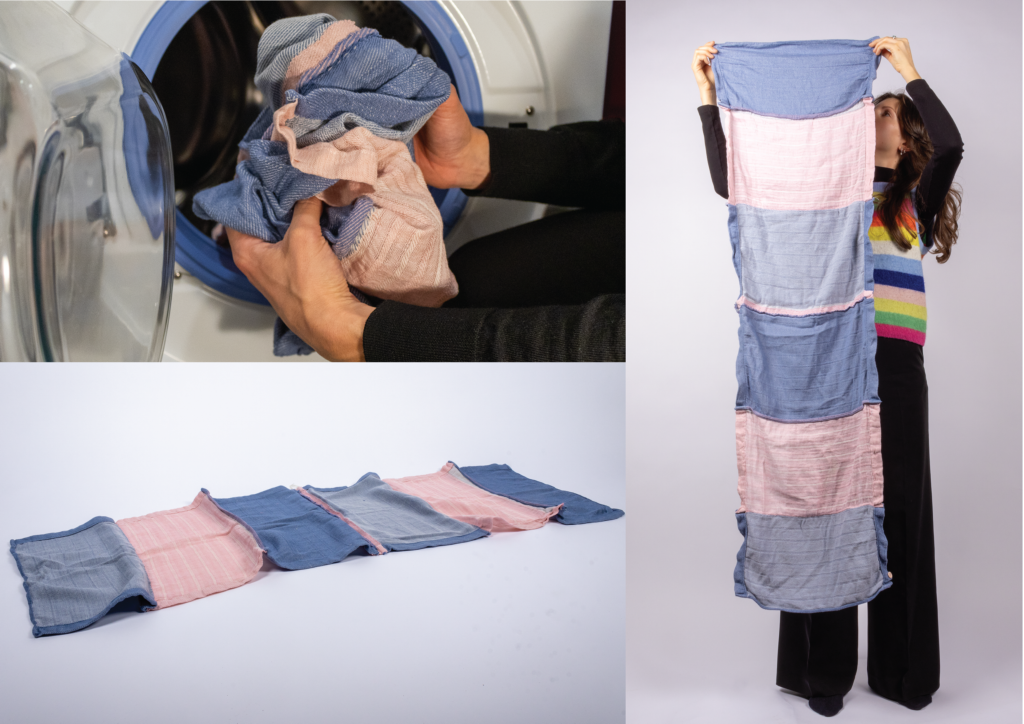Alice Buso, Holly McQuillan, Kaspar Jansen, Elvin Karana
Textiles surround us in our living spaces, but they often go unnoticed. But what if textiles could change over time, adapting to our needs and routines? A new range of active materials can animate textiles, making them change over time. For example, imagine garments that adjust to your body size, or that grow along with your children. In this project we rethink how we design textiles, envisioning a future where textiles serve multiple purposes, fostering deeper connections and longer-lasting products.
What if you could transform your tea towel into your new favourite scarf?
Multimorphic textile-forms are textile products that can present multiple embedded states. For example, a flat piece of fabric produced on a loom with multiple overlapping layers can unfold and become a three-dimensional object, almost like an origami sculpture.
To investigate how our experiences can evolve over time with multimorphic textile forms, we designed AnimaTo. After the ideation and prototyping phase in our labs, we wove AnimaTo on industrial jacquard looms by integrating an active yarn that reacts to water. The resulting product, AnimaTo, looks and feels like an ordinary tea towel. In reality, AnimaTo is designed to evolve over two stages. First, when drying your hands or dishes, AnimaTo gradually starts to change: some lines appear on its surface texture, its thickness increases, and its size slowly decreases. Then, after being washed, AnimaTo unfolds in a thin and very long cloth, three times as long as its original size. Is it still a tea towel? What has it become?
AnimaTo invites designers to re-think how they conceptualise and design textiles. In particular, designers should encourage people to play a more active role in discovering what textiles ‘can do’ or ‘can become’ after the changes. In this way, we can create more meaningful relationships with textile products that can adapt to our everyday needs.
